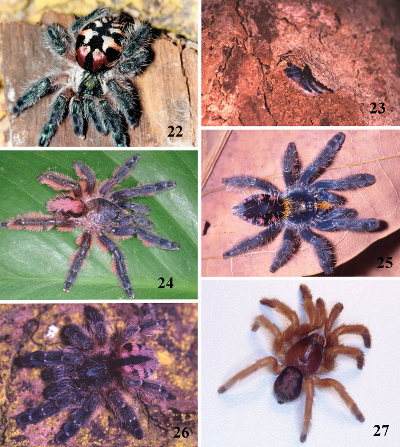
Researchers have discovered nine beautiful (to non-arachnophobes) new types of tree-dwelling tarantula in eastern Brazil, more than doubling the number of known species in the area. But don’t get too attached, because basically all of them are either threatened or endangered.
The nine newly described species include four from the genus Typhochlaena, which was last seen in 1850. That brings the total number of Typhochlaena species to five — of which only 40 specimens, total, have been collected. The other species are also rare and under threat, both from habitat loss and from the exotic pet trade. (What kid doesn’t want a furry blue spider for a pet? It’s like a cross between a Muppet and a nightmare.)
Brazilian rainforests are epicenters of biodiversity; this influx of new tarantula types shows just how many more species there are to find. The closer we look at life in these forests, the more species we’re likely to recognize — but the rainforests are in so much danger that we may find them only once they’re on the brink of destruction. The Atlantic rainforest, where some of the new tarantulas live, has been shrunk to 7 percent of its original size. And OK, maybe “fewer tarantulas” sounds like a good thing overall, but what if the next new species is an adorable lemur? Then you’ll feel pretty bad if it goes extinct before you even get properly introduced.



